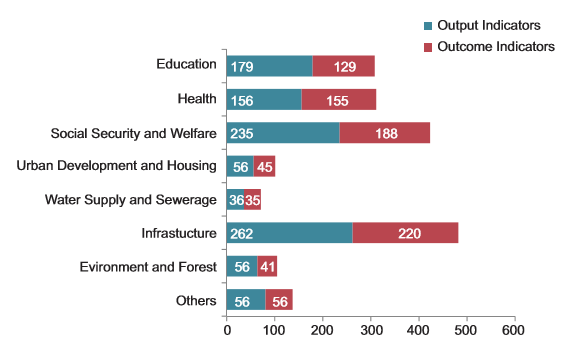Paving the Way for Transparent and Efficient Governance via Outcome Budget: AAP Advisor Jasmine Shah
 |
| Jasmine Shah with Dy CM Manish Sisodia |
What is Outcome Budget: Outcome budget is different from a traditional budget. It has a mechanism to measure government performance and determine outcomes after a financial year is over. For better understanding of outcome budget, let’s draw an analogy from private sectors. How do they measure their performance, what parameters do they use and do they incentivize good performance based on those parameters? Private sectors use input/output, stock margins, quality and others matrices to measure their performance. Outcome budget uses theory of change to measure outcomes. The framework easily breaks down a particular program into input, process, outputs and outcomes. It makes the government accountable and transparent.
Outputs and Outcomes: 2017-18 outcome budget of Delhi government has tangible and quantifiable outputs. These are mapped against each program in a financial year. Outcome budget contains the number, location and public usage of projects in the document. Construction of certain number of hospitals/schools/toilets are outputs of a government program. Whereas, outcome is the extent to which citizens will be benefited from these programs in a given term.
Comprehensive Outcome Budget: 34 government departments are included in 2017-18 outcome budget and their performance is measured using 1905 unique and quantifiable indicators. Beyond defining specific indicators, the report also captured baseline performance of those indicators for the previous year i.e. 2016-17. For the first time, a government has set a target for financial year 2017-18, and all indicators, baseline and targets are available with the budget document available in public domain. Perhaps, this is the only document used by Delhi government to measure its performance.
 |
| Output and outcome indicators for 2017-18 Delhi outcome budget |
 |
| Department of Urban Development and Housing: Progress of output and outcome indicators after Review II (Sep) and Review II (Dec) of 2017-18 Delhi outcome budget |
Review: Delhi government has a provision of quarterly review of outcome budget. These meetings are held at the CM and Dy CM level. Individual departments have frequent meetings but this process makes it sure that the review is conducted once every 3 months. The review process updates indicators and also helps in finding loopholes (if any) in the system. Once a loophole is found, the process of its elimination is accelerated by experts that can help the concerned department (See outcome budgets and quarterly review reports).
 |
| Department of Labour and Education: Progress of output and outcome indicators after Review II (Sep) and Review II (Dec) of 2017-18 Delhi outcome budget |
 |
| Environment Department: Progress of output and outcome indicators after Review II (Sep) and Review II (Dec) of 2017-18 Delhi outcome budget |
Present Delhi government can be summarized as content and grammar. As part of the content, it can be asked “What is AAP doing?”. The simple answer is: building schools, clinics, hospitals, roads, waterlines, toilets, etc. A question as part of the grammar can be “How AAP is doing this?” can be answered as “outcome budget.Outcome budget is a tool that helps in better service delivery, decision-making, program performance evaluation, communication, measurement of program effectiveness, development of a cost effective budget, measurement of accountability and better scheme management. It completely changes the objectives, planning and deliverables of governance as the entire discussion is happening around very specific indicators. We all want better infrastructure, good education and better health services. Outcome budget is measuring the performance of Delhi government and fixes its accountability.
 |
| Outcome budget showing the target missed by Delhi government. Mohalla clinic project was badly affected by power tussle in Delhi. Department of Health: Progress of output and outcome indicators after Review II (Sep) and Review II (Dec) of 2017-18 Delhi outcome budget |
Read More 🔻
ACB, RIL, FIR and power tussle in Delhi
Access all outcome budgets of Delhi Government





We are urgently in need of kidney donors with the sum of $500,000.00 USD (3 crore) and Also In Foreign currency. Apply Now!,For more info Email:
ReplyDeletehealthc976@gmail.com